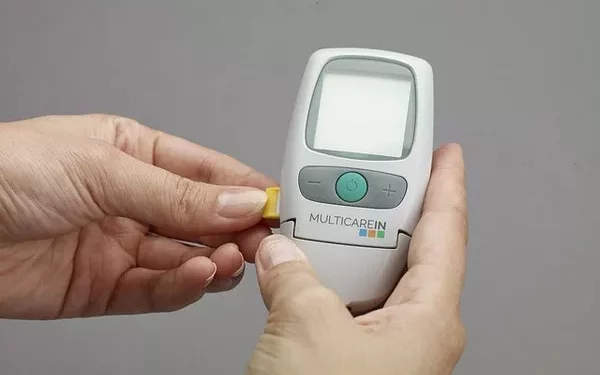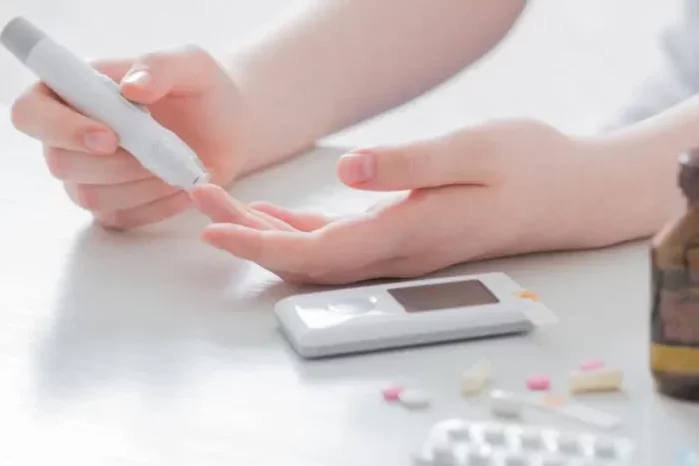Managing type 2 diabetes effectively requires constant attention to blood sugar levels. One of the most critical tools for monitoring this condition is blood glucose testing, which provides real-time insights into how your body is responding to various foods, medications, and daily activities. However, knowing when and how often to check your blood sugar can be confusing, especially given the multitude of factors that affect glucose levels.
The timing of blood sugar tests is important because it can help you better understand the impact of your daily habits and lifestyle choices on your glucose levels. This article will delve into when you should check your blood sugar, how it helps with diabetes management, and how to optimize testing frequency for effective control of type 2 diabetes.
Understanding Type 2 Diabetes and Blood Sugar
Type 2 diabetes is a chronic condition that affects the way your body metabolizes sugar (glucose). Unlike in people without diabetes, where insulin helps to regulate blood sugar by facilitating its entry into cells, people with type 2 diabetes have insulin resistance. This means their bodies do not use insulin effectively, resulting in high blood sugar levels over time.
Over time, elevated blood sugar levels can lead to a variety of complications, including cardiovascular disease, nerve damage, kidney problems, and vision impairment. Maintaining stable blood glucose levels is therefore crucial for managing type 2 diabetes and preventing these complications.
Blood sugar monitoring allows individuals with diabetes to track how well their current management plan is working. This includes adjustments to diet, exercise, medication, and lifestyle changes. However, knowing when to check your blood sugar is just as important as the act of monitoring itself. Different situations and times of day can yield more insightful data, helping you fine-tune your diabetes management.
The Role of Blood Sugar Testing in Diabetes Management
Blood sugar testing is essential for managing type 2 diabetes because it provides immediate feedback about how food, medication, exercise, and stress affect your glucose levels. The goal is to maintain your blood sugar within a target range to avoid spikes or drops that could cause harm.
By checking your blood sugar at various times throughout the day, you can:
Assess how food affects your glucose levels: Different foods, especially carbohydrates, have varying effects on blood sugar. Regular testing helps you determine which foods cause a spike or drop in your blood sugar, allowing you to make informed dietary decisions.
Evaluate your medication effectiveness: If you take oral medications or insulin, blood sugar testing allows you to see how well your medication is controlling your levels. You can also determine if adjustments are needed.
Monitor the effects of exercise: Physical activity can significantly influence blood sugar levels. Testing before and after exercise can help you understand how different types of exercise affect your glucose levels, allowing you to optimize your workouts for better blood sugar control.
Identify trends and patterns: Over time, consistent blood sugar monitoring helps you identify patterns in your glucose levels. This can be essential for making long-term adjustments to your treatment plan.
Avoid complications: Keeping blood sugar levels within the target range can reduce the risk of complications like nerve damage, kidney issues, and heart disease, all of which are associated with poorly controlled blood sugar.
When Should You Check Your Blood Sugar with Type 2 Diabetes?
The timing of blood sugar checks can vary based on your treatment regimen, lifestyle, and individual needs. There is no universal “best time” for everyone, but several factors play a role in determining the optimal times for testing.
1. Fasting Blood Sugar Test: First Thing in the Morning
One of the most common times to check your blood sugar is right after you wake up, before you eat or drink anything. This is known as a fasting blood sugar test. It is an essential test to assess your body’s glucose level after a period of rest and without the influence of food.
Why it matters: The fasting blood sugar test helps you understand how well your body is managing glucose overnight. It also reflects the body’s basal insulin function (the amount of insulin required to regulate blood sugar without food intake).
When to check: Ideally, check your blood sugar first thing in the morning, before you eat or drink anything. A normal fasting blood sugar level should be below 100 mg/dL (5.6 mmol/L). For people with diabetes, fasting blood sugar levels can vary, but the target range is generally between 80-130 mg/dL (4.4-7.2 mmol/L).
2. Before Meals: Preprandial Blood Sugar
Checking your blood sugar before eating (preprandial) gives you a baseline measurement that helps you understand how your body is handling glucose in preparation for food.
Why it matters: It allows you to see how effectively your medications, diet, and exercise are managing your glucose levels during periods of fasting or between meals. Additionally, knowing your premeal glucose level can help you make adjustments to your meal plan.
When to check: Test your blood sugar 30 minutes to an hour before your meal. For most people with diabetes, the goal is to maintain premeal blood sugar levels between 80-130 mg/dL (4.4-7.2 mmol/L).
3. After Meals: Postprandial Blood Sugar
It’s just as important to check your blood sugar after meals as it is before. The postprandial blood sugar test measures your blood glucose level after eating, typically about 1 to 2 hours postmeal. This is a critical test because it helps you gauge how your body is processing the food you’ve eaten.
Why it matters: Postprandial blood sugar levels indicate how effectively your body is managing the glucose that comes from the food you eat. The goal is to avoid sharp spikes in blood sugar after meals, which can be harmful over time.
When to check: Test your blood sugar 1 to 2 hours after a meal. For most individuals with diabetes, the target postmeal blood glucose level should be below 180 mg/dL (10 mmol/L).
4. Before and After Exercise
Exercise plays a crucial role in managing blood sugar levels, and it can lower your blood glucose levels by increasing insulin sensitivity. However, exercise can also lead to fluctuations in blood sugar, particularly for individuals on insulin or other medications that affect glucose regulation.
Why it matters: Monitoring blood sugar before and after exercise helps you understand how your body responds to different types of physical activity. It also enables you to prevent low blood sugar (hypoglycemia) or high blood sugar (hyperglycemia) during or after exercise.
When to check: Before exercising, check your blood sugar. If it’s below 100 mg/dL (5.6 mmol/L), you may need to consume a small carbohydrate snack before you begin. After exercising, check your blood sugar again to assess how the activity affected your levels.
5. During Episodes of Illness or Stress
When you’re ill or stressed, your blood sugar levels can rise due to the release of stress hormones like cortisol and adrenaline. Illness can also affect your ability to eat regularly, which can lead to fluctuations in blood glucose levels.
Why it matters: Monitoring blood sugar during illness or periods of stress is important to prevent significant spikes in blood sugar, which could lead to complications. The body’s usual response to stress can impair insulin effectiveness, so it’s crucial to track how blood sugar behaves during these times.
When to check: You should test your blood sugar more frequently during illness or stressful events, as directed by your doctor. It’s advisable to test every 4-6 hours to monitor for any significant changes.
6. Before Bed
Testing blood sugar before bed can help you understand if your levels are stable overnight. This is especially important if you experience hypoglycemia (low blood sugar) overnight or if you are adjusting insulin doses that might affect your nighttime glucose levels.
Why it matters: By checking before bed, you can avoid the risk of low blood sugar during sleep, a dangerous condition that may go unnoticed without monitoring.
When to check: Test your blood sugar before going to bed. The target range for bedtime blood sugar is typically between 100-140 mg/dL (5.6-7.8 mmol/L).
7. When You Feel Symptoms of Hypoglycemia
If you are experiencing symptoms of low blood sugar, such as shakiness, dizziness, confusion, or sweating, it is essential to check your blood sugar immediately. Low blood sugar can be dangerous and requires prompt treatment.
Why it matters: Hypoglycemia is a common issue for people taking insulin or certain medications that lower blood sugar. Testing during an episode of hypoglycemia allows you to confirm whether your symptoms are due to low blood sugar.
When to check: If you experience symptoms of hypoglycemia, check your blood sugar right away. If it’s below 70 mg/dL (3.9 mmol/L), treat it with a fast-acting carbohydrate such as glucose tablets or fruit juice.
How Often Should You Check Your Blood Sugar?
The frequency of blood sugar monitoring depends on several factors, including the type of diabetes treatment you’re using, your lifestyle, and your target glucose range. For some individuals, testing may only be necessary once or twice a day, while for others, more frequent monitoring is required.
For those using insulin: Individuals who take insulin may need to check their blood sugar more frequently, such as before and after meals, before bed, and sometimes in the middle of the night.
For those using oral medications: Those using oral medications may check less frequently, but testing before meals and occasionally after meals can still provide valuable insights.
For those with stable glucose levels: If your blood sugar is well-managed and stable, you may need to check less often but still at critical points like before meals or when feeling unwell.
Conclusion
Blood sugar monitoring is an essential part of managing type 2 diabetes. Knowing when to check your blood sugar can help you better understand how your body responds to different factors such as food, exercise, medications, and stress. By regularly monitoring at key times of the day, you can make informed decisions about your diet, activity level, and medication use, leading to better blood sugar control and overall health.
The timing and frequency of your blood sugar tests should be tailored to your individual needs and management plan. It’s always important to consult with your healthcare provider to determine the best testing schedule for you. With consistent monitoring and proactive management, you can live a full and healthy life with type 2 diabetes.
Related topics:
What Is Flash Glucose Monitoring?



























